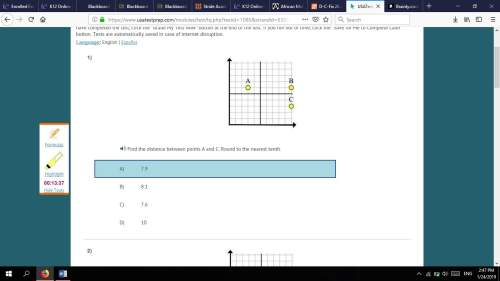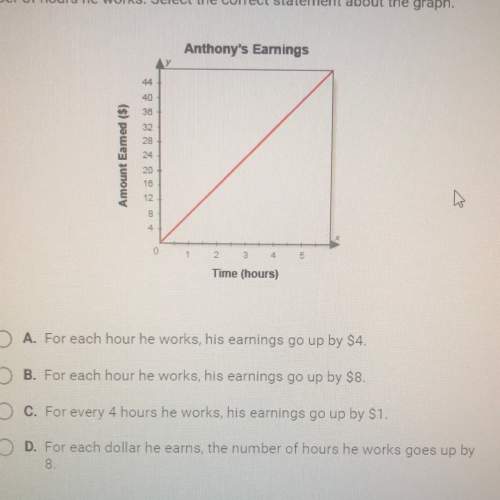
Mathematics, 03.09.2021 02:10 dria40
The first five triangular numbers are shown, where n represents the number of dots in the base of the figure,
and d(n) represents the total number of dots in the figure.
When n = 1, there is 1 dot. When n = 2, there are 3 dots. When n = 3, there are 6 dots. Notice that the total
number of dots d(n) increases by n each time.
Use induction to prove that
d (n) = n(n+1)/2
Prove the statement is true for n = 1.
Part B:
Assume the statement is true for n=k. Prove that it must be true for n=k+1, therefore proving it true for all natural numbers, n.
hint: since the total number of dots increases by n each time, prove that d(k)+(k+1)=d(k+1)

Answers: 3


Another question on Mathematics

Mathematics, 21.06.2019 21:30
Look at the figure below: triangle abc is a right triangle with angle abc equal to 90 degrees. the length of ac is 5 units and the length of ab is 4 units. d is a point above c. triangle adc is a right triangle with angle dac equal to 90 degrees and dc parallel to ab. what is the length, in units, of segment cd?
Answers: 1

Mathematics, 21.06.2019 23:00
Which rectangle if translated 6 units right and 16 units down and the rotated 90° clockwise about the point (4, -11) will result in rectangle e?
Answers: 2

Mathematics, 22.06.2019 00:10
How do i take any fraction and make it into a decimal or percentage?
Answers: 1

Mathematics, 22.06.2019 02:00
The half-life of a certain material is 0.004 second. approximately how much of a 20-gram sample will be left after 0.016 second? a. 5 grams b. 16 grams c. 0.32 gram d. 1.25 grams
Answers: 3
You know the right answer?
The first five triangular numbers are shown, where n represents the number of dots in the base of th...
Questions






Mathematics, 27.03.2020 01:28

Biology, 27.03.2020 01:28













Mathematics, 27.03.2020 01:28





